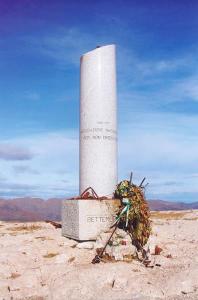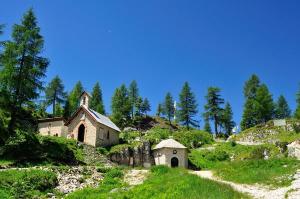
off
Monte Ortigara /1
“At an altitude of 2003 metres the Austrian trenches begin, the first taken by assault by the Bassano; it was here that two years ago I picked up an Italian helmet with a skull inside. The bones were intact and white.
I go up the Austrian trench, I enter the caves, I look from the machine-gun emplacements where the Alpini have gone down, I climb the rocky stairs, I go back out in the trenches, I go where there were the Austrian barracks on the side in front of the Valsugana, and again through walkways, devastated trenches, roofless shelters, deep holes where poles, fences, remains of weapons, bombs, emerge from the ground between the stones. This is the top of the Ortigara today.
At an altitude of 2101 metres there is the Austrian cross with the names of the Feldjäger and Kaiserschützen units, and above, at an altitude of 2105, the broken column of the Alpini: “not to forget.”
From “I racconti di guerra” (The war stories, edited by Folco Portinari), “Nelle caverne dell’Ortigara ancora odor di guerra” (In the Ortigara’s caves smell of war again).
“We went down, we walked around through devastated trenches, bushes of mountain pine and alder, until reaching a place called the Crocetta, near the Malga Campiluzzi, where Ceva, Mondovi and the others went out to the attack on June 10, 1917. From here, I said, you are left to go between the Ortigara and the Monte Chiesa. Then he remembered, and it was like a sip of mysterious liqueur animated and paralysed him.”
From “I racconti di guerra” (The war stories, edited by Folco Portinari), “Dove anche l’erba stenta a crescere” (Where even the grass finds it hard to grow).
The context
Among the many stories that Mario Rigoni Stern dedicated to the Ortigara we have chosen three, divided into two routes which complement one another, for the diversity of their geographical and historical setting. The first passage, written in the fiftieth anniversary of the battle, is exemplary of the large capacity by the writer to interpret the signs of the land (the nature) in order to obtain very detailed information about the events that took place (the story). The second, written in 1980, tells the story of when, twenty years ago, the writer had accompanied a veteran of the Mondovi Battalion in the places where most of his companions had fallen in June 1917. The third passage explains the next route, Ortigara/2.
The route
The Ortigara is one of the most popular destinations of the Asiago Plateau, with decades of continuous pilgrimages from all over Italy, before by the survivors, and then by their descendants. And also by the many people who seek in vain among the rocks that have become a universal symbol, a reason for the massacres of war, and try to empathise with the suffering and anguish of so many young people sent to die. All the place is full of historical testimonies, particularly the manufactures (trenches, trails, buildings, caves) recovered as part of the “Ecomuseo della Grande Guerra” (Ecomuseum of the Great War).
The easier and faster (and crowded) path is the one that starts from Piazzale Lozze, which can be reached by car on a cart road that after leaving Gallio goes past the ski area of Melette, Campomulo and Fiara, continuing in a northerly direction. From the square (1.771 m) take the road that goes up to the west and you reach the church (1,890 m), near which there are the ossuary, an Alpine refuge and the observation post of Cima Lozze (m. 1,920).
Taking again the CAI path 840 to the north-west the Baito Ortigara (1,937 m) is easily reachable. Then go up to the top of the ridge, where the Italian war memorial (2,106 m) stands, which is reached after a walk of about one and a half hour. Approximately 300 metres to the north there is the Austrian war memorial, which seems to guard the military citadel in support of the first imperial line where even today, consistent traces still remain. From the top great views of the Plateau, the Valsugana and Lagorai.
For the return you can make a loop that includes the ascent to Cima Caldiera, which was the destination of one of the last trips of Mario Rigoni Stern, in 2005. From the Austrian memorial go down on the path 240 to the north-west up to the Passo dell’Agnella, then soutwards up to an altitude of 1,944 metres, where you take on the left, above the Pozzo della Scala, through the Alta Via degli Altipiani no. 11, which, after a military cemetery, reaches the Cima Caldiera (2,124 m) as path 241 (remarkable view, an observatory in a cave with two floors and the Torino Observatory). To avoid the peak, at the intersection at altitude 2,044 metres, near the cemetery take on the right the unmarked path towards the Cima della Campanella, where you get onto the military road (itinerary 241), that after a few bends leads back to Piazzale Lozze.




